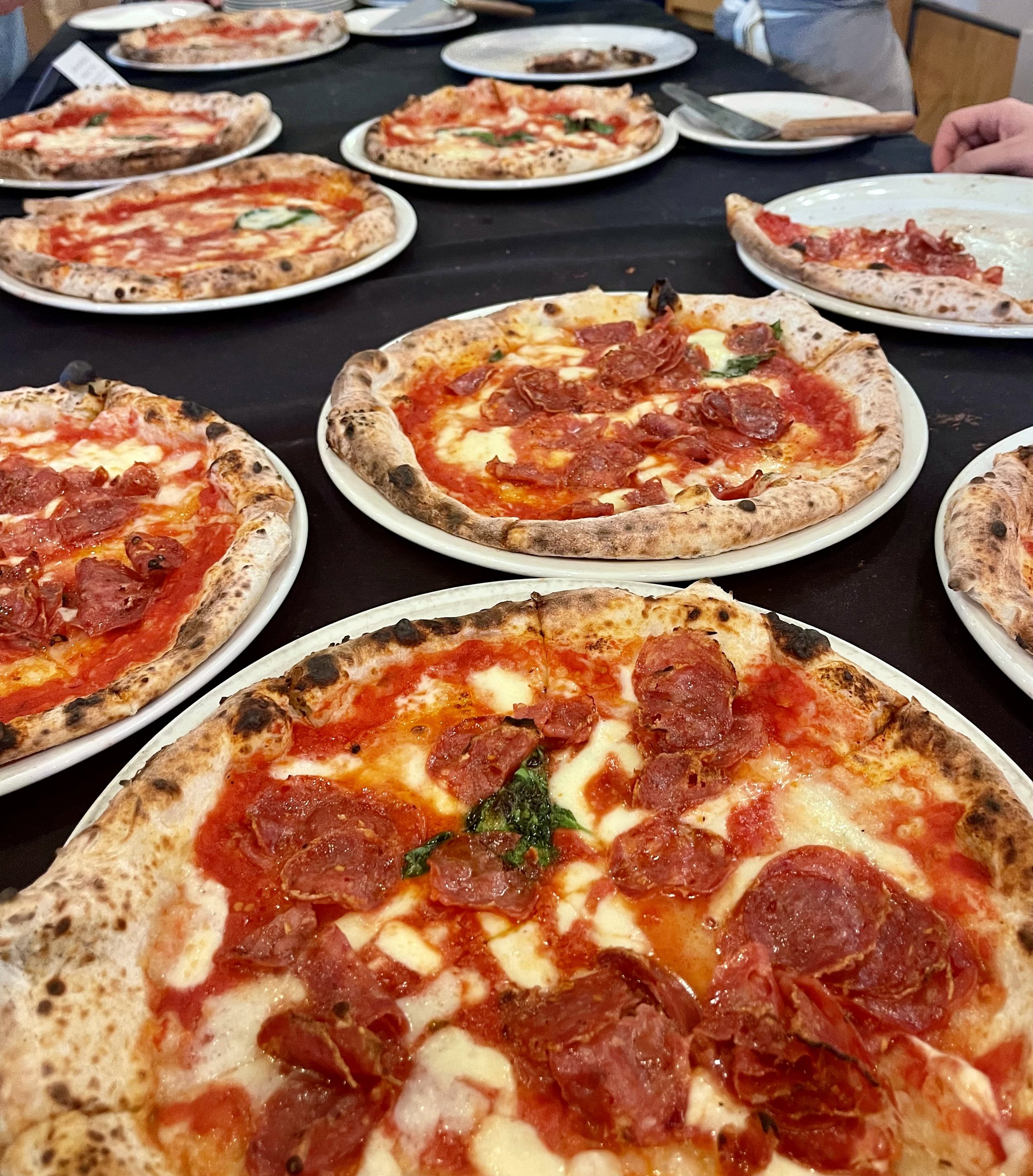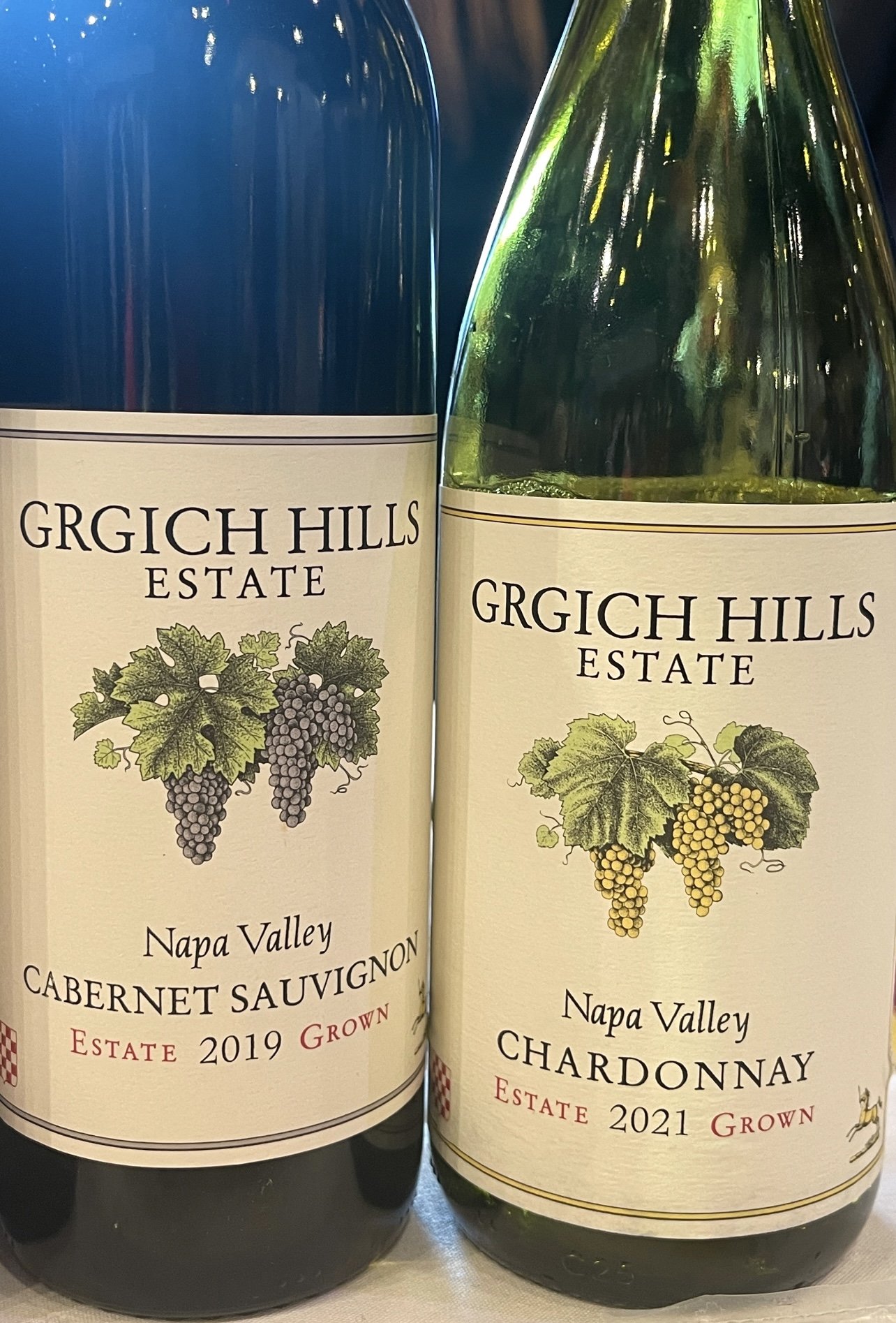Slow Wine Wineries: Respecting and Reflecting the Local Terroir
/Earth Month may be over, but caring for the environment should be a daily priority for all of us. If you’re a regular reader of The Wine Chef or follow my Instagram, @nycrestaurants, you know I advocate for wine producers who work sustainably and aren’t paying lip service to the cause.
What can a wine producer do to be more eco-conscious? Here is a small but important list of measures they can take.
Farm organically without synthetic chemicals that deplete the soil of its life and can contaminate soil, water, turf, and other vegetation.
Promote Biodiversity by incorporating grasses, hedges, and wooded areas into the vineyards, introducing pollinating insects like bees, and adding farm animals, like sheep, which provide natural fertilization and grazing. This will increase soil fertility and preserve habitats.
Hand-tend vines, eliminating the need for diesel tractors and the air pollutants they emit.
Conserve water by recycling and reusing it.
Use eco-friendly packaging with lighter bottles and less cardboard, and remove non-recyclable tin foil capsules.
Support employee well-being with programs and other incentives for employees and their families.
Since I’m always on the hunt for environment-friendly wineries, the recent Slow Wine tasting, held in New York City for wine press and trade, was right up my alley. The 2024 Tour returned to major U.S. wine markets, New York City and San Francisco, as well as Washington DC, Austin, and Denver, coinciding with the release of the Slow Wine Guide USA 2024.
What is Slow Wine?
Slow Wine is an offshoot of Slow Food, a movement whose mission is good, clean, and fair food for all. Slow Wine advocates for wineries that produce high-quality wines in an environmentally responsible way—good, clean, and fair wine. Currently, the guide has two editions, one for Italy (with a small selection of Slovenian wines) and the other for the U.S., covering California, Oregon, New York, and Washington State.
Wineries are selected to be in the guide, free of charge, after a member of the Slow Wine team visits and performs a thorough evaluation by seeing the operations and engaging in extensive conversations with wine producers about their viticulture and winemaking methods. This approach ensures detailed reviews of the wines and the people behind the production.
The Slow Wine tastings allow wine industry members to discover eco-friendly wineries and raise consumer awareness by writing about or featuring them in their restaurants and shops.
The Slow Wine Tasting in NYC. All photos by Lisa Denning.
Eataly Downtown provided a fantastic assortment of cheeses, salami, pizza, and pasta, a delicious complement to the wines.
Deborah Parker Wong, national editor of Slow Wine USA, says that the criteria for including a winery in the Slow Wine Guide USA are simple: farming without synthetic herbicides and good wine quality. The U.S. guide established the herbicide-free criteria first, while the Italian guide is transitioning to it in 2025.
Parker Wong says that the guide assists consumers in recognizing producers who “put farming first” by avoiding synthetic inputs and prioritizing land preservation in their sustainability practices. Last year, the guide saw a 39 percent increase in listings as farming practices shifted away from synthetic herbicides.
“While we celebrate all the wonderful work that our wineries do to conserve and recycle resources,” says Parker Wong, “protecting the land and the health of the people who work and live on it is the foundation of all sustainability initiatives and forms our baseline criterion.”
Slow Wine distinguishes genuine sustainability efforts from misleading claims, making it easier for consumers to find the producers they want to support.
“When producers prioritize sustainability initiatives that are easier to adopt, like solar or water reclamation, over adapting their farming practices and still shout claims of being sustainable, this is where we separate the transparent messaging from the greenwashing,” says Parker Wong.
Slow Wine Links To Know About
The full list of wineries is on slowwine.com.
The Slow Wine Guide USA 2024 can be purchased here.
Find out where to purchase the wines on wine-searcher.com.
Below are some wineries that caught my eye—and my taste buds!—at the Slow Wine tasting in New York.
With over 70 wineries present at the event and many more listed in the guide, there are numerous eco-friendly wineries waiting to be explored. Don't forget to show your support by visiting them when you travel to their regions.
Napa’s Grgich Hills Estate has been certified organic since 2006, but their organic farming practices span more than 20 years prior.
“Soil health is a top priority in our approach to winegrowing,” says Ivo Jeramaz, Winemaker/VP of Vineyards & Production and nephew of the late winemaker Mike Grgich.
Donum Estate is a leader in estate-grown, single-vineyard Pinot Noir and Chardonnay in Sonoma, California. In 2022, they achieved organic certification for their four estate vineyards in Carneros, Russian River Valley, and Sonoma Coast.
Director of Winegrowing Tony Chapman (above) says that since converting Donum’s vineyards to organic, they’ve seen their greatest resource thrive: the soil.
Hermann J. Wiemer came from a winemaking family in Mosel, Germany, home of the world’s most prized Riesling. He recognized the beauty in the similarities and differences between the soils from his homeland and those in the Finger Lakes. Today, the estate is run by Fred Merwath and Swedish-born Oskar Bynke, who eliminated herbicide use in 2003.
Ancarani Vini is an Italian winery on the Romagna side of Italy’s Emilia-Romagna region. Owners Claudio Ancarani and Rita Babini make terroir-representative wines with indigenous, organic grapes that are manually picked.
“We make identity wines, sincere and joyful, and we want them to bring a smile to those who drink them,” says Ancarani.
G. D. Vajra is a trailblazing winery—the first Barolo winery to adopt organic farming in 1971 and the first to plant Riesling in 1985. The winery produces notable single-vineyard Barolos as well as heirloom varieties like Dolcetto and Freisa.
G.D. Vajra is a family affair, with founders Aldo and Mirena Vaira’s children, Giuseppe, Francesca, and Isidoro, playing important roles in the winery's operations. In an interview, Giuseppe Vaira told Grape Collective that, unfortunately, beginning in the mid-20th century, the wisdom accumulated by hundreds of years and many generations of farmers was suddenly wiped out by the chemical business and the desire for quantity over quality.
“In the end,” said Vaira, “there is not so much to be invented as there is to be rediscovered.”
Noelia Ricci makes delicious organic Sangiovese and Trebbiano wines in the Predappio area of Romagna. I recently discovered the winery’s Sangiovese on the menu at Rêzdora restaurant, so I was thrilled to meet and chat with owner Marco Cirese (above). He told me that fermenting his wine in concrete tanks preserves the purity of the grape’s aromas and flavors.
“The wine is allowed to express the true essence of our terroir,” says Cirese. And I would agree. The wines are a unique expression of Sangiovese.
Réva winery’s property lies within the UNESCO-heritage hills of Piedmont’s Langhe region. While the winery has been certified organic and biodynamic for over a decade, it doesn't mention this on the wine labels.
“You don't drink our wines because we are biodynamic, organic, or natural,” says winemaker Gianluca Colombo. “You drink our wine because the wine is good.”
I Garagisti di Sorgono winery was born on the Italian island of Sardinia when three friends teamed up to reintroduce their grandparents' wines. They cultivate 80+-year-old vines of the island’s signature grapes, Cannonau, Monica, and Bovale. The wines are striking—big, juicy, and intense.
Valle Reale’s vineyards, planted with Abruzzo’s indigenous varieties, reside in one of Italy’s most beautiful national parks. Recognizing the importance of conserving the beautiful and uncontaminated environment, the entire organic estate has also been converted to biodynamics.
From the Palmento Costanzo website:
“Everything here uncompromisingly speaks of the Muntagna, the name we fondly use to refer to Mount Etna. Eighteen hectares divided into several contradas and hills. The small parcels are vinified separately because each plot is characterized by the lava flow that sedimented over time. In the cellar, the parcels are vinified separately, following specific paths focused on capturing the soul of the volcano’s different expressions. The vats and barrels chosen also aim at purity: stainless steel, tonneaux, and large barrels have been selected to ensure that the essence of wood would not overpower the natural richness of the vine of origin.”
For Luca Formentini, owner of Lombardy’s Selva Capuzza winery, sustainability is not just an empty phrase: no herbicides have been used here since 2010. The vineyards offer plenty of green space for flora and fauna, the grapes are all picked by hand, and rainwater is collected and used for irrigation.
“To us, organic viticulture is a good habit, like good wine and good food,” says Paolo Pasini, third generation of Pasini San Giovanni in the Lake Garda area of Lombardy.








































